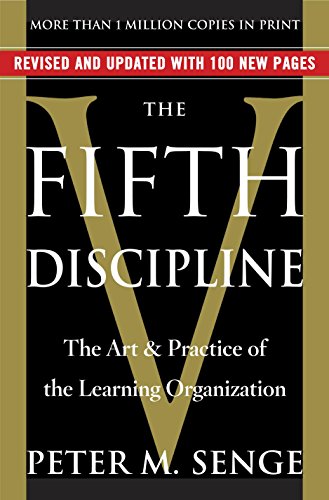Summary Link to heading
“The Fifth Discipline: The Art & Practice of The Learning Organization” by Peter M. Senge explores the concept of the learning organization, a model where organizations continually enhance their capacity to create their desired results. Senge identifies five disciplines that are essential to achieving this transformation:
- Personal Mastery: Encouraging individual growth and lifelong learning.
- Mental Models: Challenging and refining internal assumptions and generalizations.
- Shared Vision: Developing a mutual objective that fosters genuine commitment over compliance.
- Team Learning: Promoting group dialogue and collective learning to enhance team competence.
- Systems Thinking: The cornerstone discipline, integrating the previous four to understand the organization as a complex and interrelated whole.
Together, these disciplines guide organizations toward adaptability and sustained success by fostering an environment where continuous learning is intrinsic.
Review Link to heading
“The Fifth Discipline” is widely regarded as a seminal work in the field of organizational development. Its strength lies in the holistic framework Senge provides for fostering a learning organization. By emphasizing systemic thinking, the book empowers leaders and teams to examine underlying patterns rather than surface-level symptoms.
However, some critiques point out the book’s dense and theoretical nature, which may be challenging for readers seeking more practical step-by-step guidance. Despite this, its conceptual depth has made it a pivotal read for those interested in organizational learning and transformation.
Key Takeaways Link to heading
- The Importance of Systems Thinking: Understanding interactions and dependencies within complex environments is crucial for effective problem-solving.
- Embrace Continuous Learning: Personal growth and team development are ongoing processes that contribute to the organization’s adaptability.
- Cultivate a Shared Vision: Aligning team members around a common purpose fosters collective motivation and direction.
- Challenge and Reflect on Mental Models: Regularly reassessing and adjusting personal and organizational assumptions enhances innovation.
- Promote Team Learning: Engaging in open dialogue and considering multiple perspectives leads to better team decisions and outcomes.
Recommendation Link to heading
This book is highly recommended for leaders, managers, educators, and anyone involved in organizational development or learning. It provides deep insights into building a resilient and adaptable organization through continuous learning and systemic thinking. Readers interested in long-term strategic improvement rather than quick fixes will find it particularly valuable.
